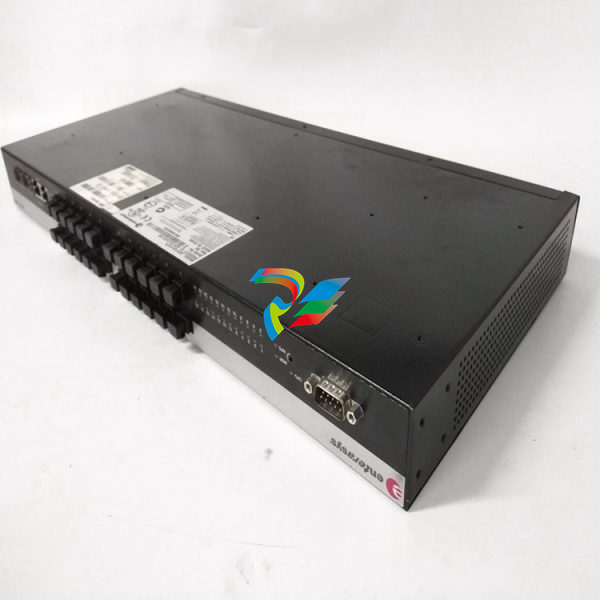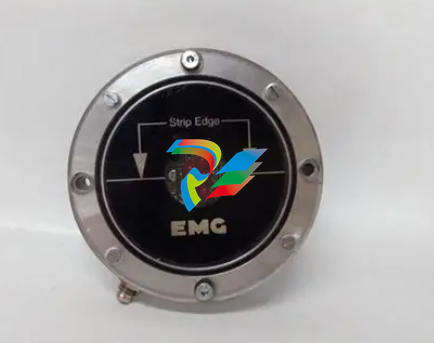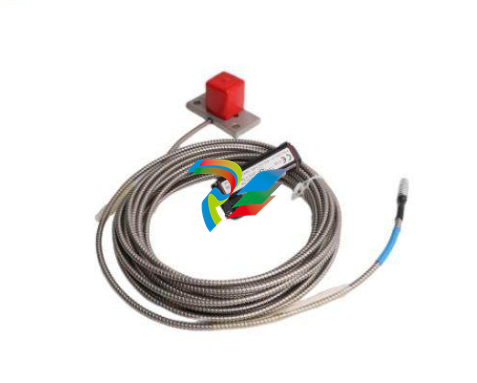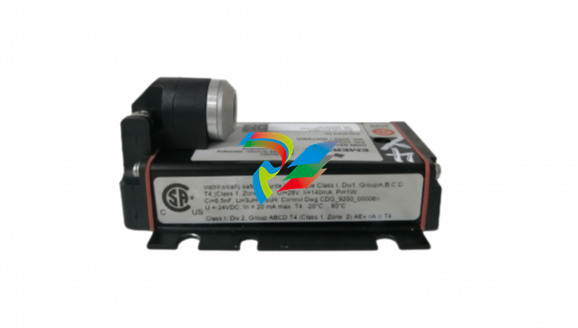
ABBIndustrial Networks Connecting Controllers via OPC
but on a customized hardware device containing a microcontroller/FPGA.
This would result in so-called bus coupler device, which is commonly used
for other bus types [44]. However, this approach is of course development
intensive and very specific.
• With PM644 there exists a processor module for AC160 which provides a
PROFIBUS interface [45]. This module’s performance is too weak for the
intended task, though. Nonetheless, it could be “misused” as communication interface, sending/receiving all data to/from the real processor modules
PM665. Since it can only act as PROFIBUS DP master, just like CI854A,
they need multiple DP/DP-couplers1 as relaying devices. The lack of redundancy support could be compensated by the same measures as already
discussed in the preceding chapter [46].
• Last but not least it would be possible to replace PROFIBUS and MMS by
an alternative communication technology. Due to the restricted selection of
communication interfaces and limited capabilities of (field) buses this does not
make much sense today. But as Industrial Ethernet solutions like PROFINET
[47] will become more and more important, this will be changing whithin the
next years.
7.3 Conclusion
Results show that with the accurate components it is generally feasible to establish
a fast (enough) controller-to-controller connection via OPC, meeting the requirements in average. With the Woodhead PROFIBUS solution, which showed best
results, this can be reached using only one PCI card for each bus. However, the
long-time test showed that there are limitations concerning the real-time requirements, since the maximum RTT we measured was almost three seconds. As long
as this is the case, this approach cannot be used for critical applications. Moreover,
there are smaller problems like the word swap that have to be considered. We are
sure that this unwanted appearances can be eliminated by implementing some of
the proposals of the preceding section. Nevertheless, the system can be used for
in-house purposes, e.g. to test certain software parts before another approach is
available, or even for non-critical operational applications like visualization tasks.
Also the engineering effort to realize a PROFIBUS connection is acceptable, especially since variables can be processed transparently in AC800M. The use of tools
like Excel and Bulk Data Manager is a big help in this context.
infrastructure. Implementing complete redundancy even inside the personal computers seems to be in no relation to the effort. The proposed solution, treating the
computers as single “lines” and moving redundancy brainpower to the controllers,
is a realistic and feasible approach. However, it is engineering and programming
effort anyway and redundancy can slow down the connection. It is therefore recommended to do without redundancy as long as such a system is only used for not
process relevant in-house purposes.
Since OPC DA is based on Microsoft’s COM, a proprietary solution, one will always
be restricted in various directions. Along with many other improvements, OPC UA
will get rid of this drawback and open up new perspectives to connect controllers.
It is therefore important for ABB to build up know-how for OPC UA and implement these specifications in their own servers. An alternative, more specific and
less general but also promising approach is the use of PM644 with AC160, which
in our opinion should be tested out if the need for such an application persists.
We believe that the testing of such a configuration can be done in a comparatively
short period. Last but not least we would like to remark that importance of fieldbuses will decrease due to the entry of Industrial Ethernet solutions. We therefore
recommend keeping an eye on this development.
Diplomarbeit ABB Schweiz AG
Power Systems / Power Generation
Industrielle Netzwerke
Leistung – Verfügbarkeit – Zuverlässigkeit
Es sollen die bestehenden Strukturen von industriellen Netzwerken und Bussystemen für die
Kraftwerksautomation basierend auf dem ABB Leitsystem 800xA analysiert werden. Dabei sollen
verschiedene Fragestellungen in den Bereichen Verfügbarkeit, Leistung und Sicherheit bearbeitet
werden.
Das ABB Control-System welches zur Steuerung von Hochleistungs-Gasturbinen eingesetzt wird, soll
mit den neuesten Technologien punkto offener Schnittstellen, Anbindung an TCP/IP Netzwerke und
Unterstützung von Device Management Tools etc. ausgerüstet werden. Hierzu soll der bestehende
„Kopf-Rechner“ Advant Controller 450 durch einen Controller der neuesten Generation, einen AC800
M Controller ersetzt werden.
Die Aufgabe besteht darin, den AC800 M Controller an einen Advant Controller 160 über das
bestehende Interface AF100 OPC Server anzukoppeln. Es ist eine Lösung zu erarbeiten, welche
zyklischen Datenaustausch des AC800 M Controllers mit dem AC160 Controller unter Einhaltung des
geforderten Datendurchsatzes, der Verfügbarkeit und der Zuverlässigkeit ermöglicht. Dabei sind die
zurzeit verfügbaren Produkte und Technologien der Plattform zu nutzen.
Die Bearbeitung der oben aufgeführten Fragestellungen beinhaltet sowohl einen theoretischen als





























































































































